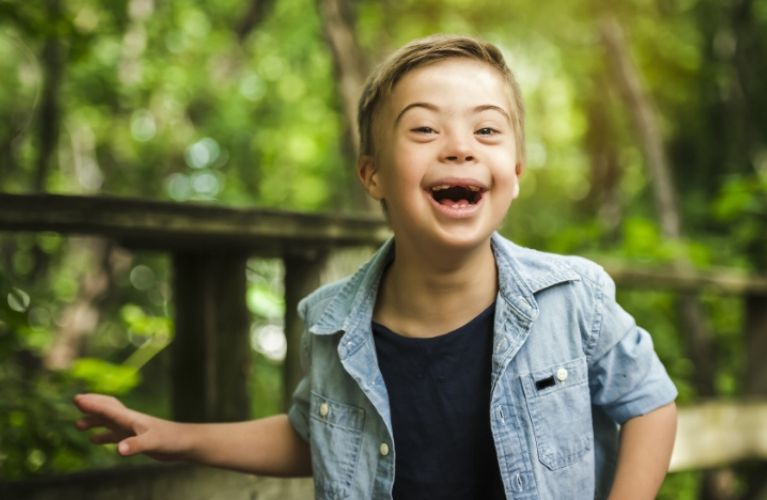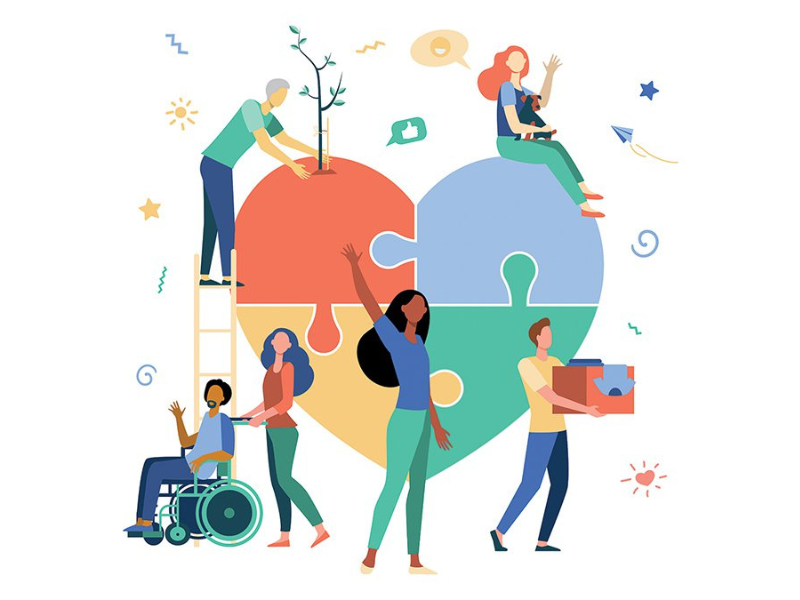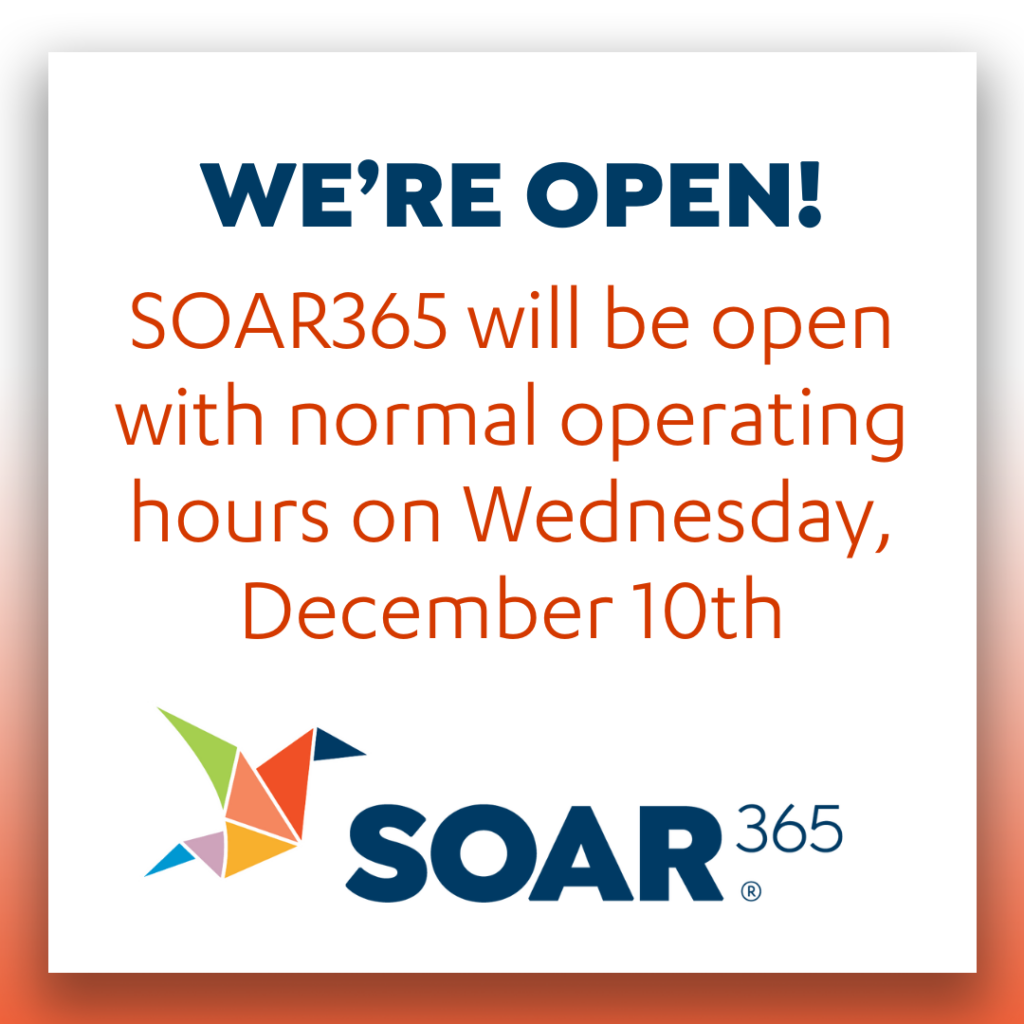This article originally appeared in the November 2024 edition of Richmond Magazine as well as on RichmondMagazine.com. Please visit their website to subscribe or to view more content.
Help, and hope, grow from shared values and shared action
American psychologist Abraham Maslow’s hierarchy of needs is often cited by those working in organizations that seek to help people struggling in life. Depicted as a pyramid, the hierarchy portrays physiological needs and safety/security as foundational requirements — basic needs that include breathing, food and water, shelter, clothing, sleep, health, employment and a living environment free from harm or injury.
Charitable organizations began to develop in the 19th century as urbanization brought more people to commercial centers, away from family and support networks elsewhere. When economic downturns occurred and people lost jobs, housing and food soon disappeared.
Nonprofits — the shorthand for organizations whose financial resources are directed outward, not inward — may or may not hold the federal 501(c)(3) designation, which offers donors the ability to deduct from their own taxes the amount they contribute to the nonprofit. A precise count is hard to come by.
“There are hundreds of nonprofits of all sizes focused on issues that matter to our region — education, workforce development, health, food access, the arts and environment,” says Vanessa Diamond, senior vice president of civic engagement for the Community Foundation for a Greater Richmond, which brings together individuals, families, businesses and civic groups to address needs and opportunities in our region. “Each one plays a unique role, from meeting individual daily needs to working towards large-scale systems change. It is a complex weaving of efforts and programs and, in reality, a very innovative and collaborative sector.”
Regardless of the number, nonprofits serve a purpose.
“I think nonprofits are essential,” Diamond says. “They are often born out of an unmet need that someone has identified … and moves beyond helping your neighbor to helping your neighbors. For me, [nonprofits] are a community’s response to responsibility for ourselves. I think nonprofits really are the culmination of shared values and shared action.”
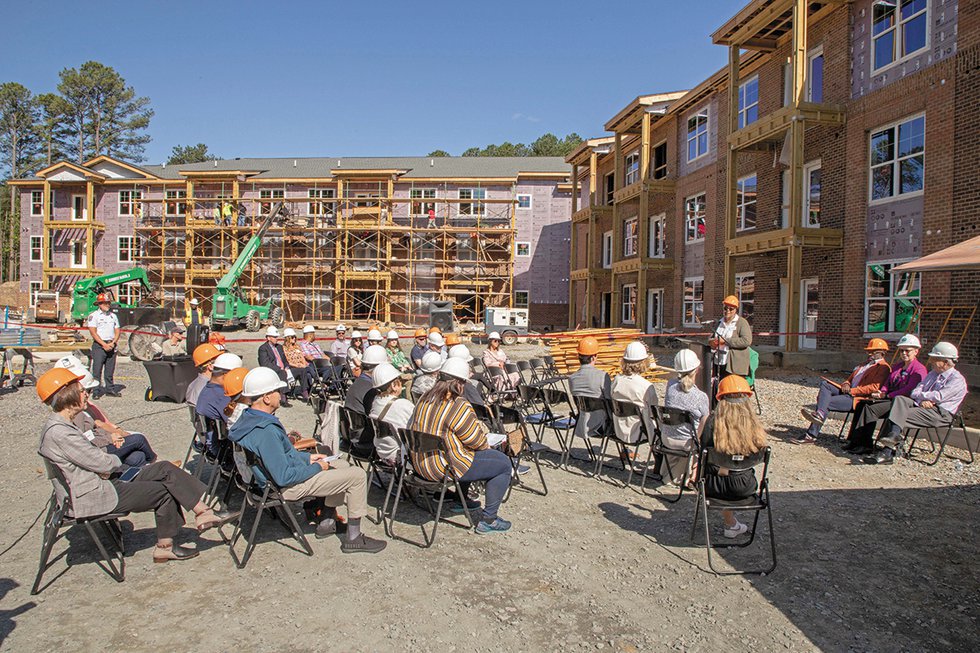
Greta Harris, president and CEO of the Better Housing Coalition, speaks at Horner Run, an affordable apartment community BHC is building in Chesterfield. (Photo by Taylor Dabney courtesy Better Housing Coalition)
The Origins of Need
In the United States over the past 100 years, opinions have changed about what the government is expected to provide for its citizens.
“To understand the nonprofit sector, you have to understand macro policies,” notes Barbara Couto Sipe, president and CEO of the United Way of Greater Richmond & Petersburg. “We’ve shifted from higher taxes and more government services to lower taxes and charitable deductions to support nonprofits as the primary provider of human services. Over centuries of history, there’s been a move from places of worship as the primary source of charitable services to the government to the nonprofit private sector. It’s an interesting evolution of how we organize and help each other.”
People also need assistance in times of crisis that exist beyond their control.
“There are global or country-size issues that will happen that may affect someone working paycheck to paycheck,” says Katina Williams, the local United Way’s chief impact officer. “Someone may have saved money by not purchasing insurance to recover from a flood. The larger issues only surface when the flood actually happens.”
Greta Harris, president and CEO of the Better Housing Coalition, notes that, from a housing security standpoint, the country still hasn’t recovered from the Great Recession that began in December 2007. “We do not have capacity; our basic economic formula of supply and demand is not in balance,” she says. “This is one key reason, among others, that is driving prices up. Housing has always been tough for those on the lower economic spectrum … and current market conditions are starting to impact moderate- and middle-income individuals who used to be isolated from economic ebbs and flows. It’s a real imbalance that will take time, resources and political will to allow different strategies to be fully implemented.”
Another factor to be considered is a history of socioeconomic inequities, many of which have been race based.
“There are systemic issues that are a part of our society that were very intentional and have lasting, generational effects,” Williams says. “This happened with 1930s Jim Crow [policies], redlining, education, health, housing, transportation. It will take decades to correct that, assuming everybody’s of the same accord.”
Harris notes that structural inequities harm everyone, not just those directly affected. “If you had a business and 25% of your workers were nonproductive, would you have the most successful business you aspire to have?” she says. “When we look regionally, we have had generational, deep-rooted poverty for a small segment of our community. There’s a host of historical reasons and intentional actions that help hold people down and have created horrific realities for families. My wish is for people to say that every individual has value and … we’re going to work together to have a strategy that helps people get toward a pathway toward economic mobility so they can be captains of their own fate and have success in their life as they define it.”
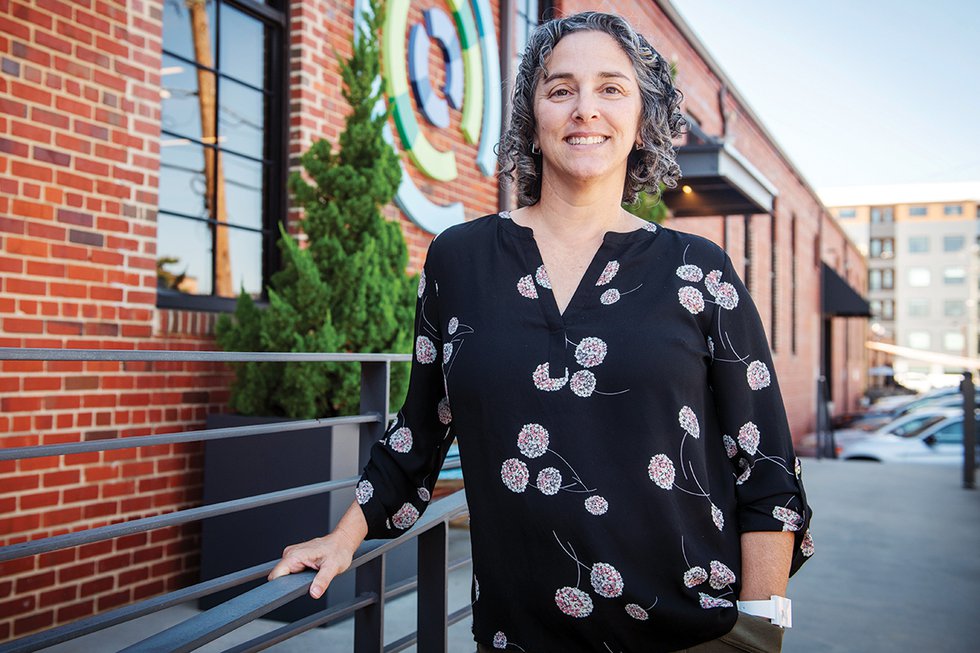
Vanessa Diamond, senior vice president of civic engagement for the Community Foundation for a Greater Richmond (Photo by Ash Daniel)
Does Size Matter?
Asking if a large nonprofit is more effective than a small nonprofit is a little like asking whether the chicken or the egg came first. Charitable organizations of all sizes make a difference, says Susan Hallett, director of philanthropy for the Bob and Anna Lou Schaberg Foundation, which supports capacity building for nonprofits by focusing on internal structure, operations and sustainability.
“We support organizations that have larger staffs, a physical space and function like larger institutions; we also support grassroots organizations with limited infrastructures,” Hallett says. “We think there’s an important role for all. Institutional organizations often have the capacity to bring things to scale, while grassroots organizations often have the ability to elevate the voice of residents they are serving and working alongside.”
Like any organization, nonprofits can struggle with funding and staffing issues. Hallett says that, in recent years, human resources issues have surged. “Out of the pandemic, it became clear that salaries and benefits weren’t meeting the services people were providing,” she says. “We supported a sector-wide compensation and benefits study and had many conversations about HR needs. Then we provided tools for nonprofit partners so they can better support their staff and then support services in the community.”
It’s an “antiquated notion” to think that employees of nonprofits are happy to take less in pay because they are doing good for others, Hallett says. “I can’t think of a time when I’ve crossed paths with a nonprofit professional who isn’t committed to the people they serve,” she says. “[Employees] also have to earn a living to support their families, and this work is incredibly hard.”
Sometimes, Harris notes, the problem is undercapitalization. “We [as a society] sometimes embrace a charity mindset rather than a strategic investment one to address the root causes of an issue and not just the symptoms,” she says. “As long as we’re funding efforts too thinly or widely, then organizations will spend most of their time trying to keep the lights on and not truly focused on resolving issues. You can raise $1 million, $1,000 at a time, or you can invest $1 million and begin to implement community change right away.”
Newer nonprofits are particularly susceptible to financial struggles. “We often hear about a new organization or somebody wanting to start a nonprofit,” Hallett says. “A lot of what [the Schaberg Foundation does] is connect the dots for those folks. It’s critical that organizations understand their universe — who else is doing the work in that space, who else is serving this population? It’s not right to discount a new or emerging organization, because community problems are emerging and evolving every day. Welcoming organizations that are approaching these challenges with a different lens is valuable.”
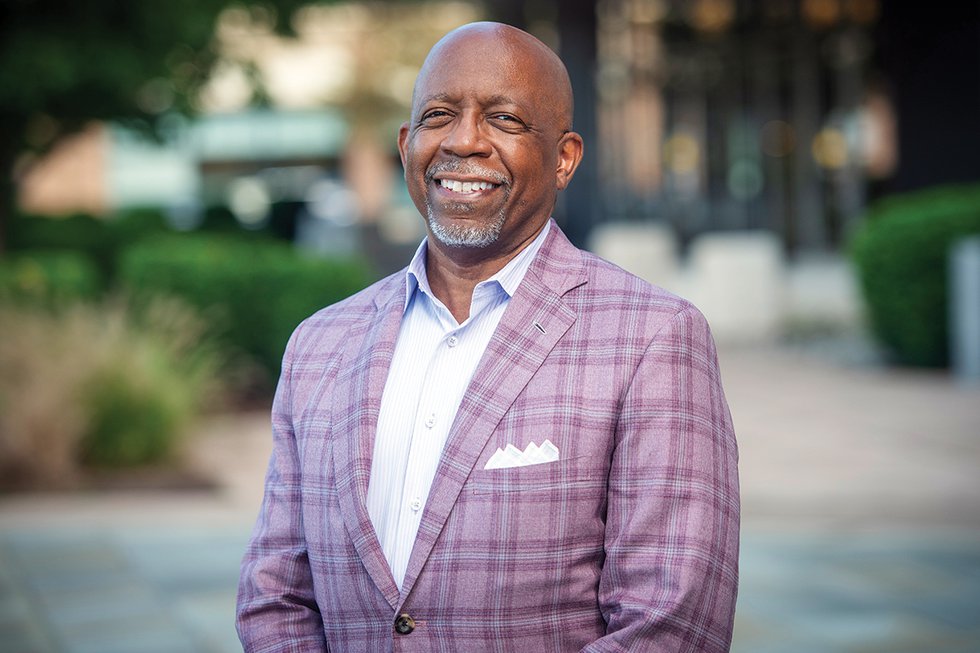
Reginald E. Gordon, president and CEO of the Richmond Memorial Health Foundation (Photo by Ash Daniel)
Sharing the Load
Reginald E. Gordon was the first executive director of Homeward, a nonprofit that works with more than 30 community partners to coordinate homeless services in the Richmond area. Now the president and CEO of the Richmond Memorial Health Foundation, Gordon believes it’s essential to employ a strategic and collaborative approach to solving problems facing the community.
“There is cultural credibility in supporting nonprofits — that’s why we’re not dissecting it,” Gordon says. “What role are we playing in propping up a system that needs to evolve? Those of us who have been at this for a while are proponents of collaboration and intermediaries. Who’s in charge of affordable housing, food, health, equity? Some people oppose [a centralized system] because they think someone will play God and decide who gets what.”
The Better Housing Coalition celebrated its 35th anniversary last year, a milestone that wouldn’t have been possible without collaboration, Harris says. “Any success we’ve ever experienced is because of the many partnerships we’ve been able to garner over that period of time,” she says. “No one is an island. Only when you have strategic alignment with every sector is where you can have that success.”
Collaboration also has to include the government and for-profit sectors. “We work a lot with city and county government,” the Community Foundation’s Diamond says. “They have a huge Department of Social Services, and workforce and economic development programming to scale. They rely on nonprofit partners to help provide services. I don’t think one can do it without the other. It’s a fabric, a system. Is it a perfect system? Nope.”
United Way’s Sipe says that companies large and small are finding more and new ways to engage with their communities, often via nonprofits. “We’ve seen large companies shift their giving models and use technology to allow employees to be charitable to nonprofits of their choosing,” she says. “A small company may adopt the school across the street, which is hyper-local. The opportunity is in bridging the small company and large company … to make sure employers and employees know what the needs are in the community.”
Each [nonprofit] plays a unique role, from meeting individual daily needs to working towards large-scale systems change. It is a complex weaving of efforts and programs and, in reality, a very innovative and collaborative sector.
—Vanessa Diamond, Community Foundation for a Greater Richmond
Mark Smith, who owns Midas of Richmond, says relationships are good for everyone. “I firmly believe that the well-developed combination of for-profit businesses and nonprofits is greater than the sum of its parts,” he says. Smith, who uses extensive television and radio advertising to promote his auto repair stores, now has a specific agreement with the media outlets who carry his ads: For every spot he buys, the outlet gives an ad to one of Midas of Richmond’s seven nonprofit partners. “I started that by asking for one-quarter of an ad for every one I bought, then moved it to a half, now we’re one-to-one,” he says.
Business is thriving. Smith recently opened his sixth Midas location, in Church Hill. His stores’ average sales are more than double the national average. “We don’t tell you to go fight hunger or cancer,” he says. “We challenge you to go out there and find something that turns you on.”
Measuring Success
Gordon, of the Richmond Memorial Health Foundation, says he asks people if they’ve ever been at a fundraising gala where the organization’s leader stood up to announce the problem had been eradicated. Invariably, the answer is no. “We have private, public and nonprofit entities, and they all need to exist in concert,” he says. “Are we all sharing the weight equally? Who are the people we are helping? We have to listen and pay attention to those we are trying to help.”
In our region, Gordon points to Feed More as an example of a large nonprofit that has successfully leveraged its assets to attack food insecurity. “During the pandemic, Richmond was in a better spot than many other areas [in providing food],” he says. “We had a machine already in place.”
But the question remains: Is it nonprofits’ purpose to eradicate need?
“My challenge with the pressure on the nonprofit sector is that it cannot and will not solve all the problems,” Diamond says. “We should solve our problems with how we live every day. How do we hire? How do we build our buildings? Most things are going to come out of business innovation, and I think business innovation is inspired by nonprofits and volunteer action. I don’t think that business is going to solve everything. I think it’s the intersection of government, nonprofits, faith communities and business.”
The Better Housing Coalition’s Harris says it’s short-sighted — and understandable — when too much attention is given to the presenting problem, pressing though it may be. “[We’re] addressing symptoms and never getting to the root cause of the issue,” she says. “For too long, we’ve looked at these society issues in isolation when, in reality, they’re connected and interdependent. If you have economic stability and choice, you have options around investing in your health care, furthering your education to move up the career ladder that will help ensure housing stability that will help you build assets to help you support your kids.”
“I don’t know why it’s taken so long to integrate the issues,” she adds. “It’s like a braid; you have to weave issues together so a person is stronger. We are looking for success for all citizens in the region.” —Paula Peters Chambers

(From left) Joan Blake and Rodney Davenport pack food boxes at Cumberland Community Cares; the mobile food pantry is one of Feed More’s many distribution partners. (Photo by Jake Lyell courtesy Feed More)
A Tale of Two City Organizations
Some problems have more than one solution
Food insecurity takes many forms. So does help.
Feed More and RVA Community Fridges, two Richmond nonprofits, show that different approaches to the same overarching problem can be not only useful but essential.
Feed More grew out of two organizations, the first of which began in 1967. It now has more than 100 employees, more than 400 distribution partners and more than 200 daily volunteers, and delivers food to 34 counties and cities in Central Virginia. In October, Feed More moved into a 124,000-square-foot facility near the intersection of Parham and Brook roads in north-central Henrico County.
“We believe strongly in centralizing scale and delivering in proximity,” says Doug Pick, Feed More’s president and CEO. “Think of us as a wholesale distributor and our 250-plus partner agencies as our distribution channel.”
RVA Community Fridges launched in January 2021 and now has 14 free-access refrigerators located primarily within the Richmond city limits; there’s also one in Sandston and one adjacent to Virginia State University’s campus in Petersburg. A seven-person all-volunteer administrative team manages the organization’s Discord channel of roughly 250 volunteer participants, and 25 to 30 people help out weekly by harvesting, cleaning and picking up produce from partner farms, cooking in a community kitchen or stocking the fridges with meals and ingredients.
Why are both organizations necessary?

Taylor Scott, founder of RVA Community Fridges (Photo by Ash Daniel)
“Both large and small [nonprofits] are essential because they fill needs on different ends of the spectrum,” says Taylor Scott, the 20-something who started RVA Community Fridges because she had a surplus of tomatoes from an in-home hydroponic growing system and didn’t want them to go to waste.
Scott, who moved from New Orleans to attend college at Virginia Commonwealth University and stayed after graduation, was surprised to learn that Richmond didn’t have any community fridges, which sprung up in New Orleans to help residents reeling from the destruction of Hurricane Katrina. She also wanted to find a way to provide food as easily as possible using a mutual aid model.
“Most food banks have qualifications for those who can receive food, where with community fridges, there are none,” she notes, pointing to the directive written on every RVA Community Fridge: “Take what you need. Leave what you can.”
After initially resisting nonprofit status — “I didn’t want a board to tell us how to change what we do and how we provide to a community,” Scott says — in August, she announced a 501(c)(3), RVACF, that can accept donations. “We partnered with Food Not Bombs to open a community food hub, Matchbox Mutual Aid, and realized we can’t ask for money and not give a tax write-off,” she says. “With RVACF, we can pay to funnel food into the fridges, but we can still let the community fridges be as independent as they want to. Even as a grassroots organization before our nonprofit status, we could still partner with other food banks or get food from Feed More. The refrigerators are open when other places are closed, so it’s a nice combination of being able to satisfy the community where they are.”
Pick notes that more than 50% of households receiving food assistance includes at least one person with a diet-related disease. To make more fresh produce available, Feed More invested in cold storage and refrigerated trucks, and also partnered with 31 other food banks to create a produce purchasing cooperative. “We can get mixed produce at a greatly reduced cost,” he says.
Thinking about economies of scale is essential, Pick adds. “Some people want to complain when nonprofits use business speak, but you can hold both truths,” he says. “We tell people not to confuse business speak with not having a huge heart.”
And there’s room for nonprofits at every size.
“Nonprofits large and small do serve a purpose in that they provide a focus of passion, energy and experience toward a cause.” Pick says. “Nonprofits in any community provide a tremendous service to feed the souls of its citizenry. Never underestimate the service nonprofits provide to their volunteers to be in service to their community.” —PPC
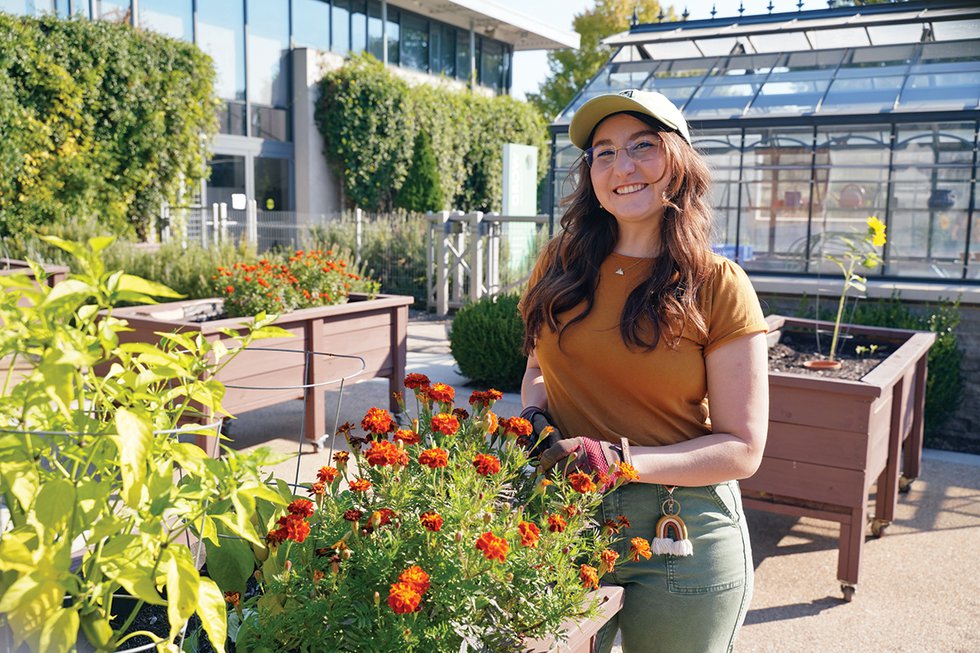
Jacklyn Cheely was introduced to SOAR365 via a company event and now volunteers there regularly. (Photo by Jay Paul)
Hands On
Mobilizing a new generation of community volunteers
“I don’t have enough free time.” “I don’t know where to start.” “I’m burnt out, and the issues are too big for me to fix.”
Gail Cavallaro hears these phrases frequently.
As the civic engagement director of the Community Foundation for a Greater Richmond — an institution dedicated to philanthropic and community-building efforts in the area — Cavallaro helps residents join our region’s cadre of volunteers. Part of her job is juggling the various schedules, accessibility, skills, needs and passions that come with every individual who donates their time.
“With the problems we face as a region and the number of solutions-oriented organizations we have around us, there’s a place for everyone in volunteering,” she says. “Everyone has something to give, and we need everyone to make these things work.”
These days, with changing work-life expectations; a booming population; institutions that once spearheaded volunteer efforts — including churches and traditional service organizations — shrinking in size; and regional, national and global issues reaching a boiling point, it feels harder than ever to make a difference as an individual. But once people like Cavallaro help Richmonders overcome those hurdles and give their time, volunteers report a host of reasons to keep it up.
Common responses are: “It makes me feel fulfilled and appreciated to help others.”
“I know what it’s like to struggle or need help, and I can give that help.”
“The issues we face are so important, I have no choice but to act.”
According to a 2023 report from the U.S. Census Bureau and AmeriCorps, the Richmond region’s rate of formal volunteerism — meaning volunteering organized by a nonprofit or other institution — was just over 25%. The area places 37th out of the top 50 metro areas in the country for frequency of formal volunteering.
That said, Richmond is still home to many active volunteers and a large infrastructure to support them. Thousands of nonprofits funnel more than 275,000 volunteers to local efforts, driving more than 21 million hours of service and creating $511 million in value to the region. Grade schools and higher education institutions in the area require volunteer hours, big corporations are adding new pathways for employees to donate their time, and residents wake up every day looking to make a change in their communities.
A look at the who, what, how and why of volunteerism in the Richmond region reveals a network of regional institutions, volunteer leaders and civic-minded residents. Together, they are working to mobilize a new generation of community changemakers, expand volunteering opportunities to meet people where they are and give back through a blend of innovation and compassion.
From All Corners
“We identify four areas where volunteers find us now: civic, corporate, faith and education,” says Dominic Alexander, volunteer engagement director for the civic aid nonprofit GoochlandCares.
Richmond’s businesses, churches and schools are among the nonprofit’s primary sources of volunteers. Those organizations present students, members or employees, all bound by a social connection, with opportunities based on interest, time and skills, which are factors that volunteer coordinators must consider to identify the right people for their cause.
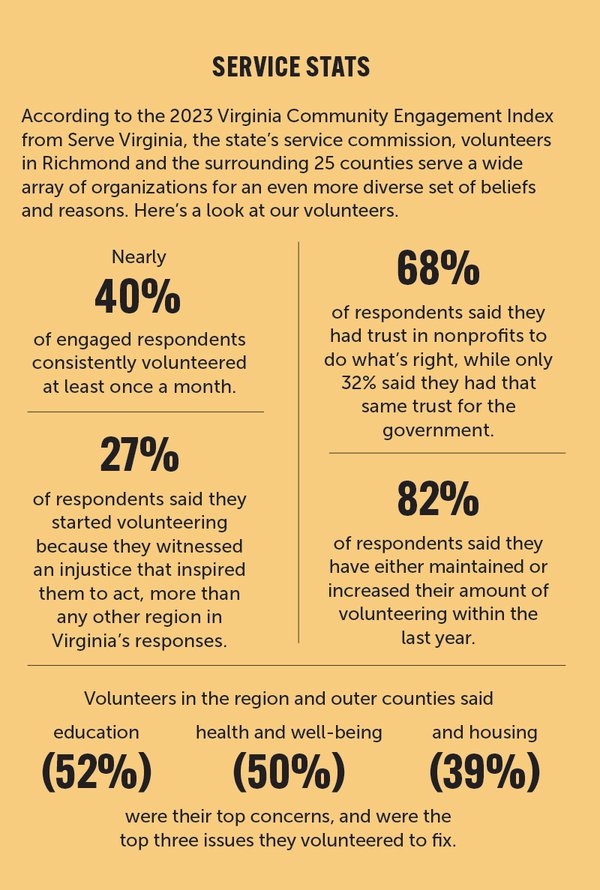
“Many people might come to find problems worth fixing by themselves, but [they] actually see ways to do something about it through their house of worship, their job or their social circle, so starting there is key,” Alexander says.
To keep community engagement healthy in the Richmond region, Cavallaro and the Community Foundation focus on capacity building for those same institutions. “There are many ways we do this,” she says. “Supporting nonprofits who have the closest perspective to the issue, building regional partnerships and empowering the volunteers themselves.”
The foundation might facilitate volunteer hour requirements in grade schools and universities, membership requirements for social groups and career clubs, and the introduction of corporate social responsibility boards at major employers in Richmond, which typically reward employees for volunteering or schedule regular group outings to nonprofits.
That’s how SOAR365 finds many of its volunteers. The disability-focused nonprofit invites employees from local corporations to participate in beautification events at its Saunders Avenue headquarters and PARK365, the accessible park, garden and playground adjacent to its offices.
“Corporations, across the board, are giving more volunteer time to employees,” says Liz Harris, SOAR365’s volunteer engagement manager. “They’re wanting ways to bond outside, and a lot of them are working from home, so now they’re looking for ways that they can get people together in person and bond together. So we have nonstop interest from corporations that want to come and do something together.” And volunteers who participate once might return.
Last May, Jacklyn Cheely attended a one-off event with her company, Innsbrook-based EAB, and saw an opportunity to get involved beyond the day’s activities. “My team at EAB went to SOAR as a team community impact event where we weeded the park’s landscaping. I got there and I saw this beautiful garden space that was going underutilized and just so happened to be in the right place at the right time to overhear that they were looking for a gardening specialist,” Cheely says.
“[EAB is] really passionate about community impact, and they actually offer 10 hours a month that you can take out of your out of your workday to volunteer,” she adds.
Cheely sketched plans for plants that could grow in the unused space at SOAR365 and designed lessons that could stretch into the harvest season. She uses work-sponsored volunteer time to schedule her gardening visits on Fridays during adult and youth day sessions so she can interact with more of SOAR365’s program participants. “It’s not only growing and cultivating the plants, it’s growing and cultivating that community. From week to week, it’s been a pleasure to see how excited some of the more regular participants get over the opportunity to garden and to learn,” Cheely says.

Volunteers at the GoochlandCares food pantry (Photo courtesy GoochlandCares)
Finding Your Fit
Volunteering is not a monolith, Cavallaro emphasizes. While some participants lace up boots and snap on gloves before a stint of manual labor, others use technical expertise or professional skills to contribute to a nonprofit’s mission. Broadening the perception of volunteer activities plays a key role in bringing more participants into the fold, so organizations have started encouraging unique ways of giving back.
“The diversity of volunteers that come to us are our lifeblood. Hands down, we cannot work without a wide range of volunteers,” Alexander says. GoochlandCares’ one-stop-shop model is unique in the region, offering 12 care programs including a free clinic, thrift store and food pantry. Its success relies on more than 1,000 volunteers each year.
Many of the volunteers’ tasks require little context or training, so they are suited to people of all backgrounds and skill sets. Some positions, such as those at the free clinic and the home repair program, require prior experience or training. However, Alexander notes that all roles allow volunteers to do something special within their capabilities.
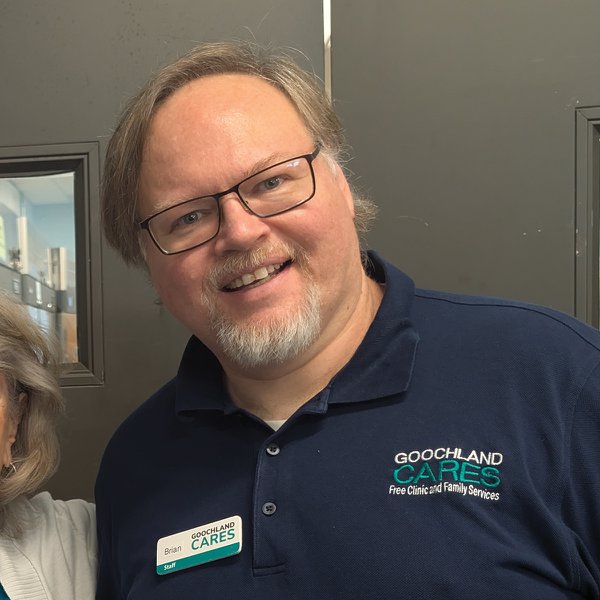
Brian Sallerson uses skills from his IT career to manage the GoochlandCares food pantry. (Photo courtesy GoochlandCares)
Goochland County residents Brian and Stacy Sallerson began volunteering at the GoochlandCares food pantry in January 2024 after retiring from careers in information technology. Sallerson — now the food pantry’s manager — filled a much-needed role early in his tenure: helping clean and stock shelves, take in donations, and check out customers.
A few months in, he decided to solve a big problem within the pantry: communicating wait times and stock levels to shoppers. He took a page from his experience in information technology and created a digital display, based on a design for art exhibitions in England, that shows a queue and the prevalence of produce, proteins and other food categories in the store.
“We’re retired from the IT industry, and this scratches an itch,” Sallerson says. “Using that skill set, that knowledge, that education is great, and it just feels good to be able to see what we’ve done actually have a positive impact.”
Leveraging a volunteer’s background to pinpoint areas for improvement that others may not have seen exemplifies skills-based volunteering, one of the nation’s fastest-growing approaches for volunteer engagement, Cavallaro says. It isn’t a new concept, she notes, but it’s crucial to meeting volunteers where they are.
“We’ve seen studies that people are looking for deeper engagement that’s based on their skills,” she says. “A lot of it can be done virtually or can be otherwise on your schedule, depending on the skill, which helps a lot of people get over that barrier.”
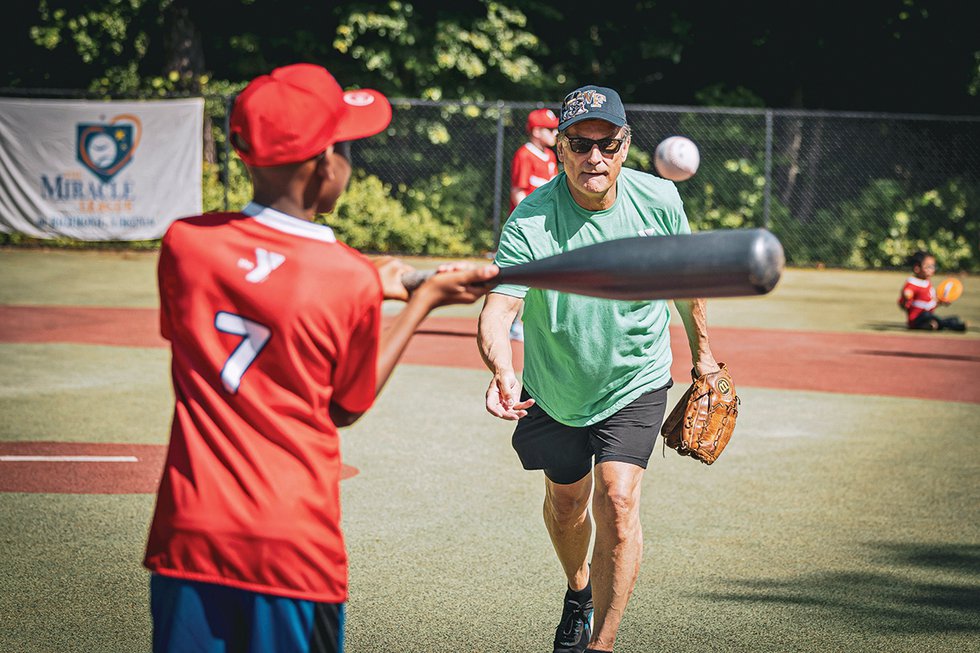
Peter Kamins is a volunteer baseball coach for the YMCA’s Miracle League, which hosts games for children with disabilities. (Photo courtesy YMCA of Greater Richmond)
Social Support
Socializing isn’t usually advertised as a benefit of volunteering, but its importance to those who donate their time is considerable.
“We get a lot of calls from people who say, ’I’m new to Richmond, and I want to connect with people,’” Cavallaro says. “That’s another major reason why people volunteer. You’re doing good, but you’re also making community for yourself.”
In a 2023 report, Surgeon General Dr. Vivek H. Murthy declared “an epidemic of loneliness and isolation” in the U.S. that began decades ago and was compounded by the COVID-19 pandemic’s changes to social life and the proliferation of remote work. He cites research showing that America’s youngest and oldest generations are proving to be especially vulnerable to the health risks of isolation, including anxiety and depression. As a result, many community leaders stress the importance of creating socialization opportunities as a health measure.
“I see a lot of retired people that may be living by themselves and a lot of teens that are looking for something to do, and they can both be socially isolated,” says Leslie Beck-Long, director of volunteer engagement for the YMCA of Greater Richmond. “But if they can find a great volunteer opportunity and they get that social connection, it can make all the difference in the world in their day-to-day lives.”
Peter Kamins, 68, started volunteering three years ago with the YMCA’s Miracle League, a program that hosts adaptive baseball games for children with intellectual, physical or visual disabilities. Every Saturday he pitches and teaches kids baseball fundamentals. “I have two boys that are grown now, but I coached them and loved it. With your own kids, you have an investment, certainly, but with these, I feel kind of that similar affinity,” he says.
Kamins’ passion for baseball made this opportunity a natural fit, and the positive experience with other volunteers and the kids he helps encouraged him to continue volunteering after his recent retirement.
“I think the enjoyment I get, even if it’s only once a week, to see the response we get from the children, their families and the volunteers, it’s all worth it. It’s just a good time,” he says.
Community in Action
Richmond’s hundreds of thousands of volunteers — school children, Scouts, members of religious organizations, executive mentors, businesses looking for employee bonding, moms with missions, active retirees and so many more — have played a defining role in shaping the community through their altruistic efforts. Thanks to a network of organizers, community advocates and average citizens, a chance to join the changemakers is only a step away.
“It feels like, going into the future, all us organizers and volunteers are being more collaborative than ever,” Cavallaro says. “I can see the value of convening and making these connections, and the idea that we’re better together is proving itself.” —Kevin Johnson
Getting Out There
Finding a volunteer gig that fits
Hundreds of organizations across the region are eager for volunteers, but finding the right opportunity can seem daunting. The Community Foundation’s expansive catalog of upcoming opportunities is one place to start. In many ways it’s similar to a matchmaking site. You complete a questionnaire detailing your interests and background, then you’re paired with organizations looking for those skills and passions. “We’re there to make that connection,” civic engagement director Gail Cavallaro says. “We have between 120 and 150 nonprofits on our site, with opportunities that are physical or virtual, skills-based or for a general audience, ongoing or done-in-a-day. We do a good job of covering everything.”
Other organizations, including GoochlandCares, YMCA of Richmond and SOAR365, emphasize passion and general availability over current skills and frequency of help. “There’s a lot that can be learned from these positions, but knowing you’re interested is going to make your time so enjoyable,” Dominic Alexander of GoochlandCares says.
Alexander suggests visiting the organization to see what it has to offer. “Come check us out before doing anything else,” he says. “See what the effort looks like, and you’ll have a better picture of what’s going to motivate you before choosing an opportunity.”
Beyond traditional and skill-based volunteer opportunities, informal volunteering — sometimes called “neighboring” — can help Richmonders contribute to their community within their means. “Bringing a meal to a sick neighbor, taking an elderly person to a doctor, watching someone’s child when they need it … all that is volunteering, and a good way to start giving back,” Cavallaro says. —KJ

